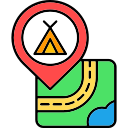Sustainable, Courteous RVing in National Parks
Never dump graywater on the ground. Strain dishwater, pack out micro trash, and use dump stations even when lines are long. Keep tires on durable surfaces to avoid vegetation damage, and minimize idling near quiet sites. What small cleanup habits do you practice that other RVers might adopt today?
Sustainable, Courteous RVing in National Parks
Many parks enforce generator quiet times, often around night to morning windows. Solar panels and efficient lithium setups can dramatically cut runtime. Park with shade and sun in mind to balance comfort and charging. Share your boondock friendly power kit, and we will feature top reader setups in future guides.
Sustainable, Courteous RVing in National Parks
Keep food sealed inside, never leave coolers outside, and avoid feeding wildlife. Bears can open unsecured doors, and even deer will nose through snacks. Give bison and elk safe distances, and secure pets indoors. Post your best wildlife etiquette reminder to help newcomers enjoy RV friendly parks responsibly.
Sustainable, Courteous RVing in National Parks
Lorem ipsum dolor sit amet, consectetur adipiscing elit. Ut elit tellus, luctus nec ullamcorper mattis, pulvinar dapibus leo.








